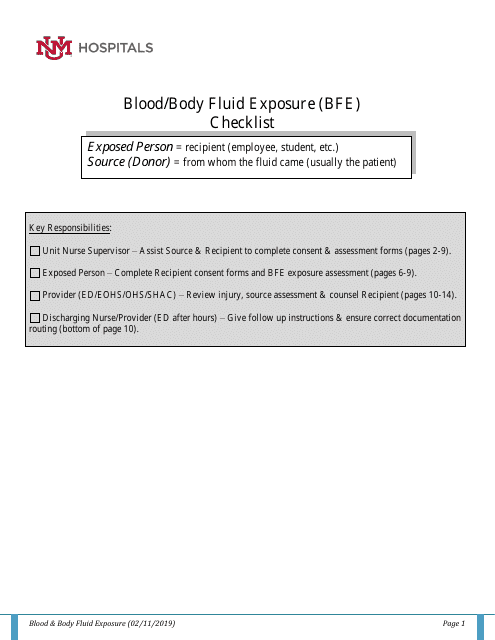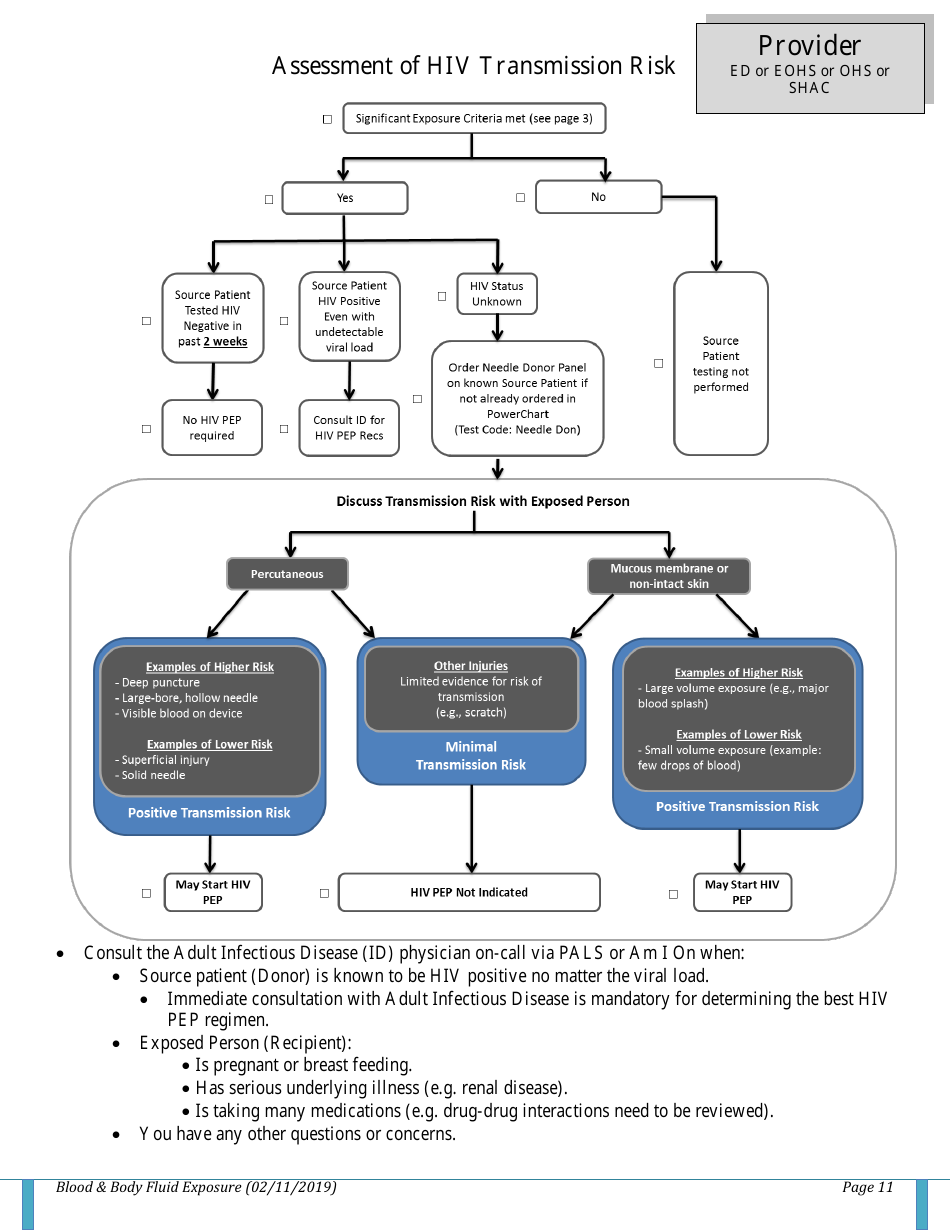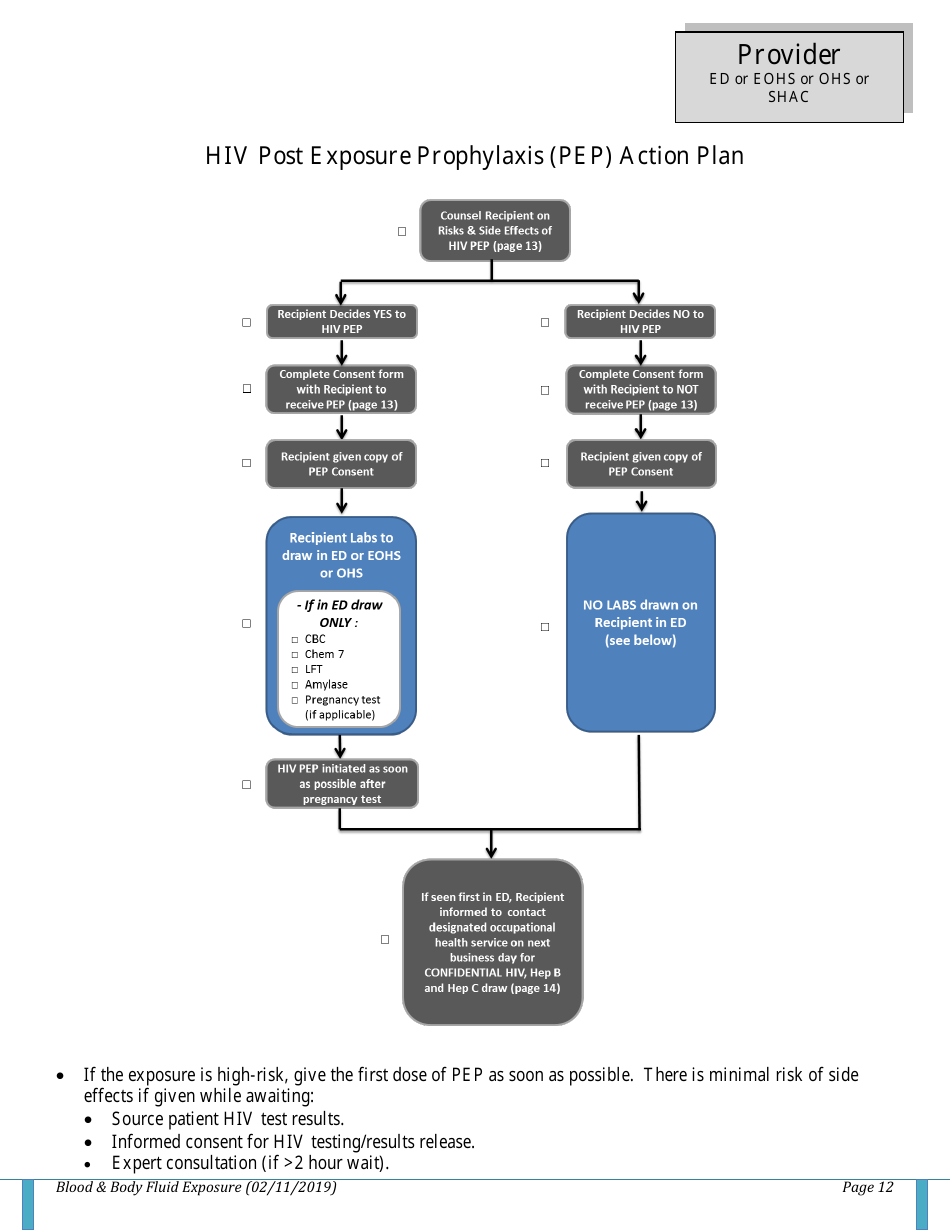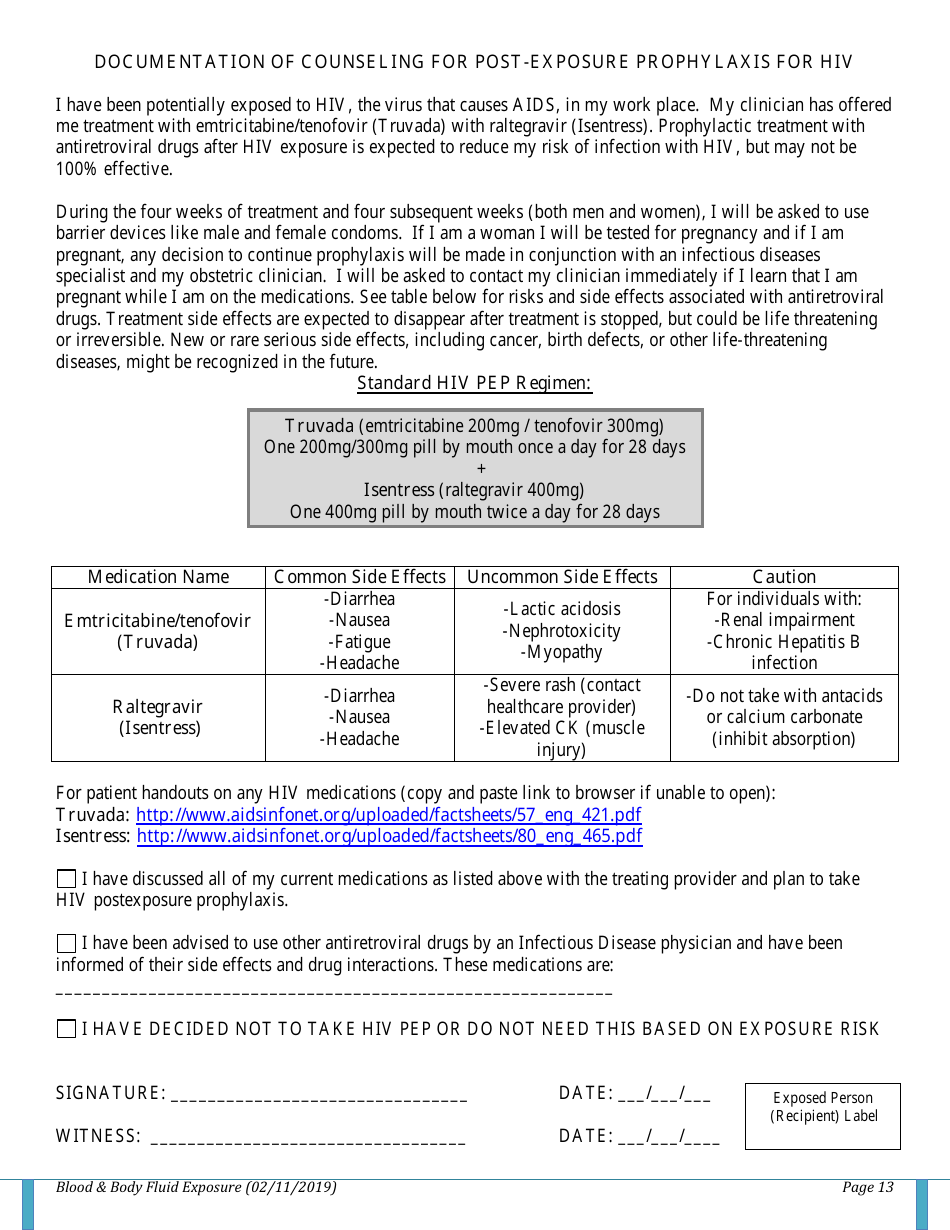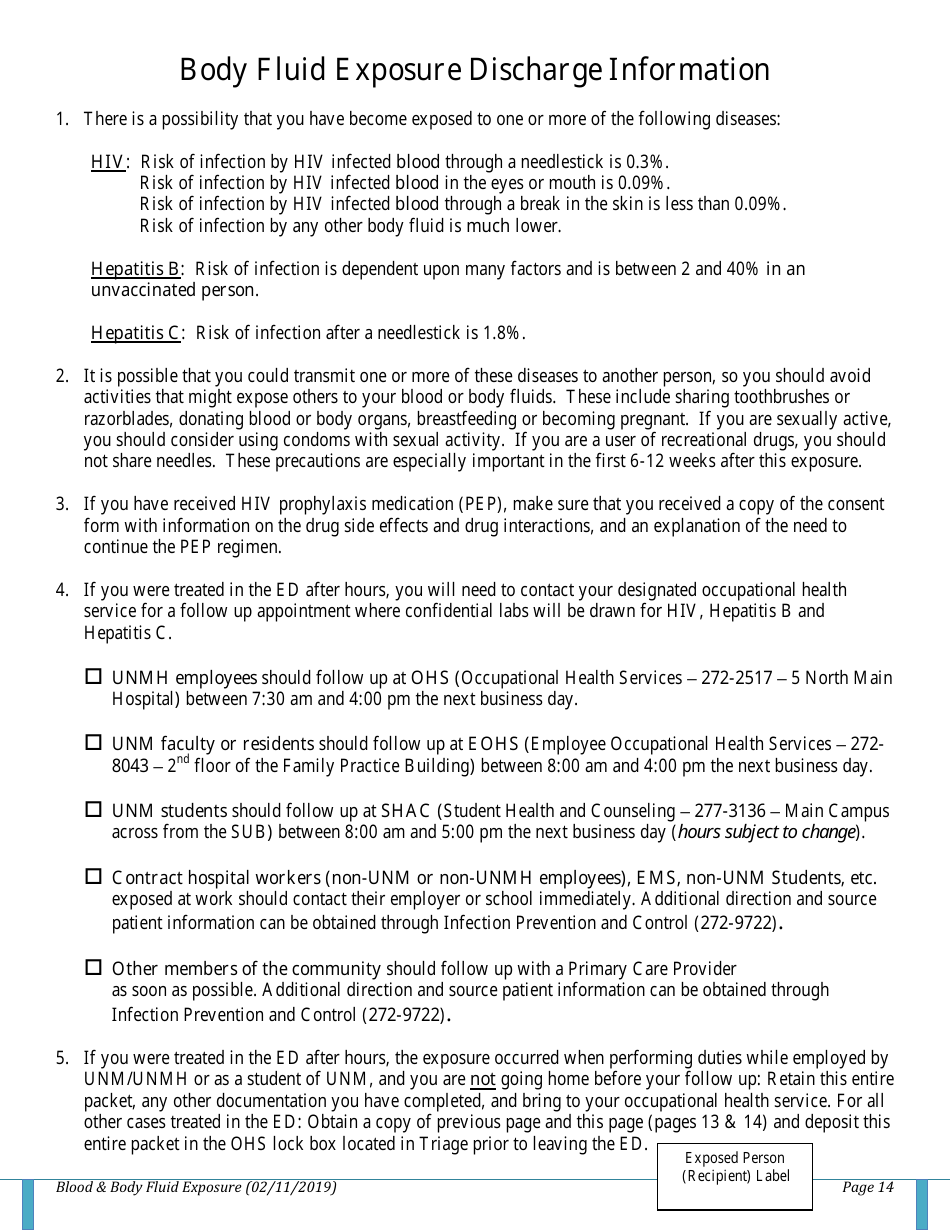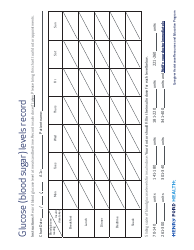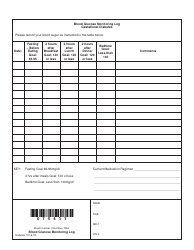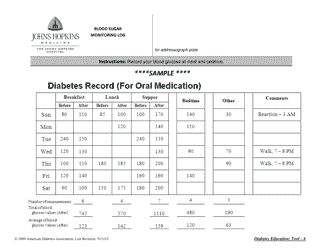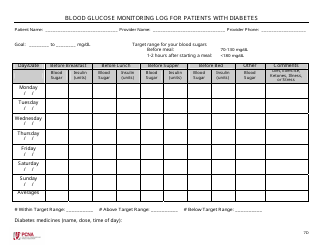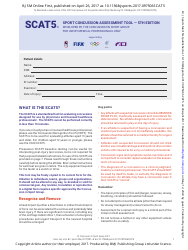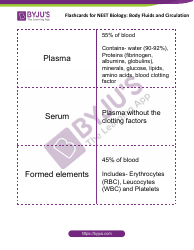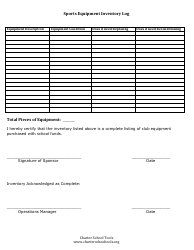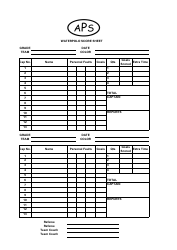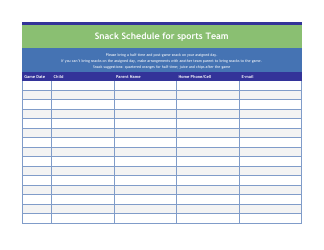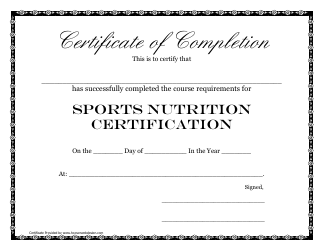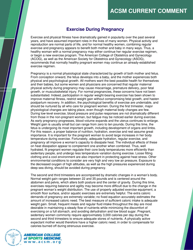Blood / Body Fluid Exposure (Bfe) Checklist
The Blood/Body Fluid Exposure (BFE) Checklist is a critical tool used primarily in healthcare settings to guide actions and responses in the event that healthcare professionals or other staff members are exposed to blood or other potentially infectious materials (OPIM). Potential exposure may come from needle sticks, cuts from other sharp objects, or contact with the eye, nose, mouth, or broken skin. The checklist typically includes steps such as immediate treatment of the exposed area, reporting the incident, and documenting the exposure details for future reference. This is done to prevent transmission of bloodborne pathogens such as HIV, Hepatitis B, and Hepatitis C.
The Blood/Body Fluid Exposure (BFE) Checklist is typically filed by healthcare professionals or occupational safety officers who are involved in incidents where there is potential exposure to blood or other body fluids within healthcare or related settings. This could include doctors, nurses, dentists, laboratory personnel, and other healthcare workers. The checklist is used as a record of exposure and the steps taken to manage the situation to minimize the risk of infection. It assists in tracking the details of the exposure and the post-exposure procedures followed, aiding in effective follow-up care and investigation.
FAQ
Q: What is a Blood/Body Fluid Exposure (BFE) Checklist?
A: A Blood/Body Fluid Exposure (BFE) checklist is a list of steps to be followed for managing the response and treatment after exposure to blood or other potentially infectious materials. It is a critical resource for healthcare workers and others who may come into contact with such materials in their work.
Q: What should you do if you are exposed to blood or body fluids?
A: If you're exposed to blood or body fluids, you should immediately rinse the area with water and soap. Remove any clothing that may have been contaminated. Seek immediate medical attention and report the incident to your supervisor. Follow all protocol defined in your workplace's Blood/Body Fluid Exposure (BFE) checklist.
Q: What constitutes a body fluid exposure?
A: Body fluid exposure can occur when one person's body fluids, such as blood, semen, vaginal secretions, cerebrospinal fluid, synovial fluid, pleural fluid, peritoneal fluid, amniotic fluid, or saliva in dental procedures, come into contact with another person's mucous membranes, non-intact skin, or through puncture of the skin.
Q: What is the purpose of a BFE checklist?
A: The purpose of a BFE checklist is to outline the steps necessary to prevent HIV, Hepatitis B or C, and other bloodborne pathogens transmission after an exposure. The checklist provides procedures for immediate and follow-up care, testing, reporting, counseling and provides administrative record-keeping.
Q: Should I still follow the BFE checklist even if I think the exposure is minor?
A: Yes, every exposure to blood or body fluids, regardless of its extent, should be taken seriously. Even minor exposures can lead to serious infections. You should immediately follow the steps outlined in the BFE checklist, no matter how minor the exposure may seem.
Q: Are all body fluids considered infectious?
A: Not all body fluids are considered potentially infectious. However, precautions should be taken whenever handling blood, semen, vaginal secretions, cerebrospinal fluid, synovial fluid, pleural fluid, peritoneal fluid, amniotic fluid, or saliva in dental procedures. Fluids like urine, feces, nasal secretions, vomit, sputum, and sweat aren't considered infectious unless they are visibly contaminated with blood.
Q: How can I protect myself from blood/body fluid exposure?
A: To protect yourself from blood/body fluid exposure, always use appropriate personal protective equipment (PPE) such as gloves, gowns, goggles or face shields when you anticipate contact with blood or body fluids. Always follow good hand hygiene practices and proper waste disposal methods. Additionally, consider getting vaccinated against Hepatitis B.
Q: What if the person exposed to blood/body fluids is already immunized against Hepatitis B?
A: Even if the person exposed is already immunized against Hepatitis B, it is still critical to follow the BFE checklist procedures. This includes immediate cleaning of the exposure site, reporting of the incident, and medical consultation. Post-exposure prophylaxis for other bloodborne diseases, such as HIV, may still be needed.
